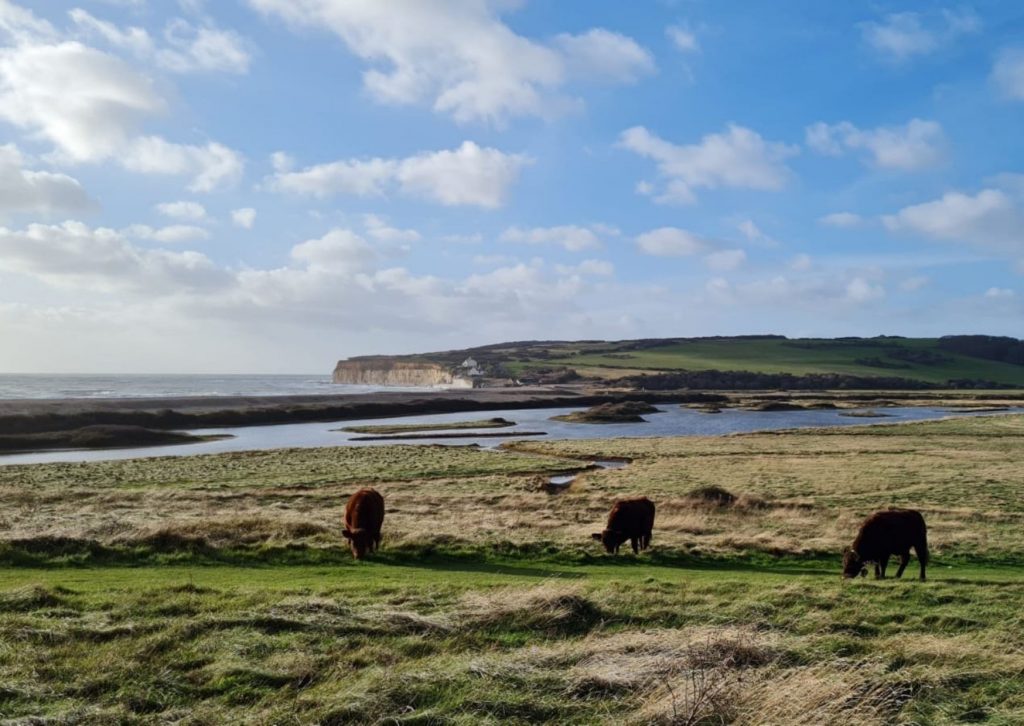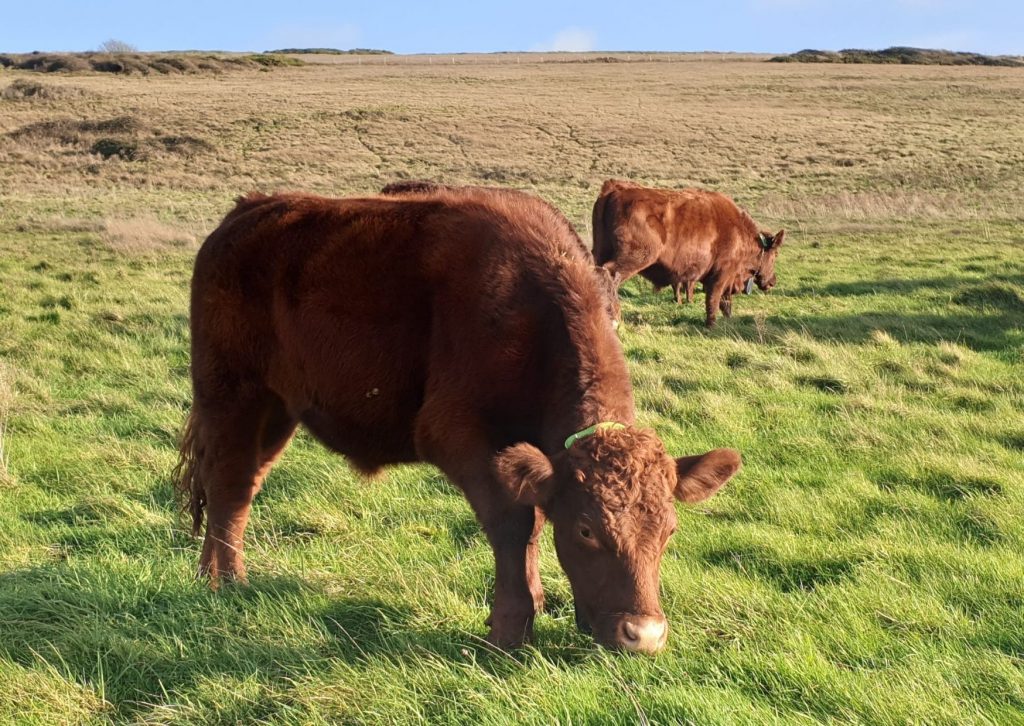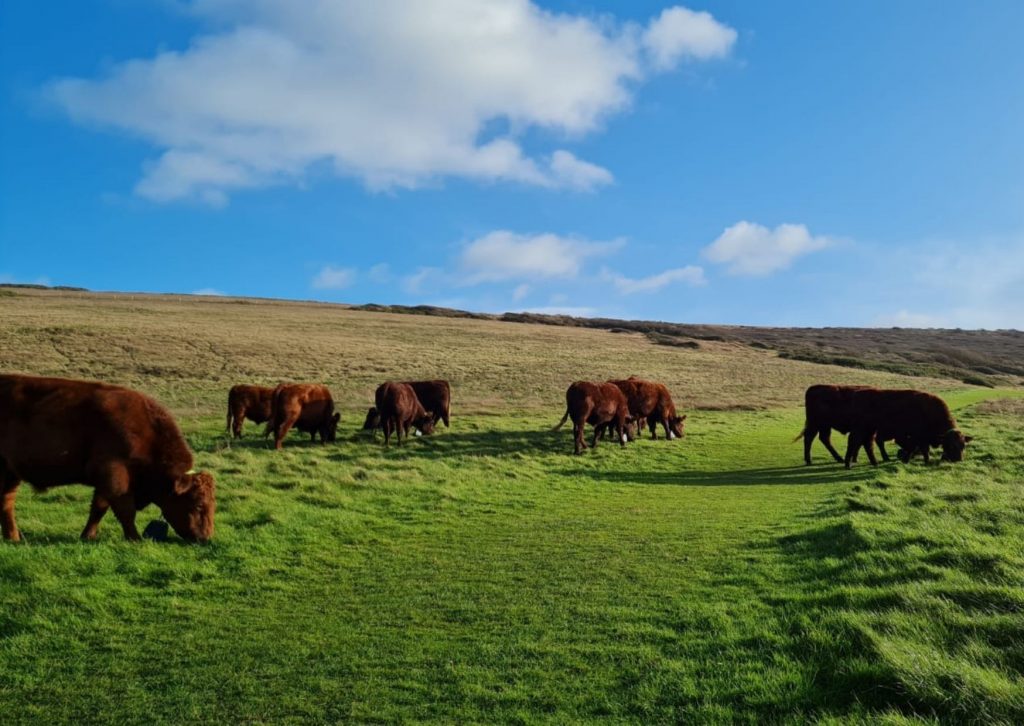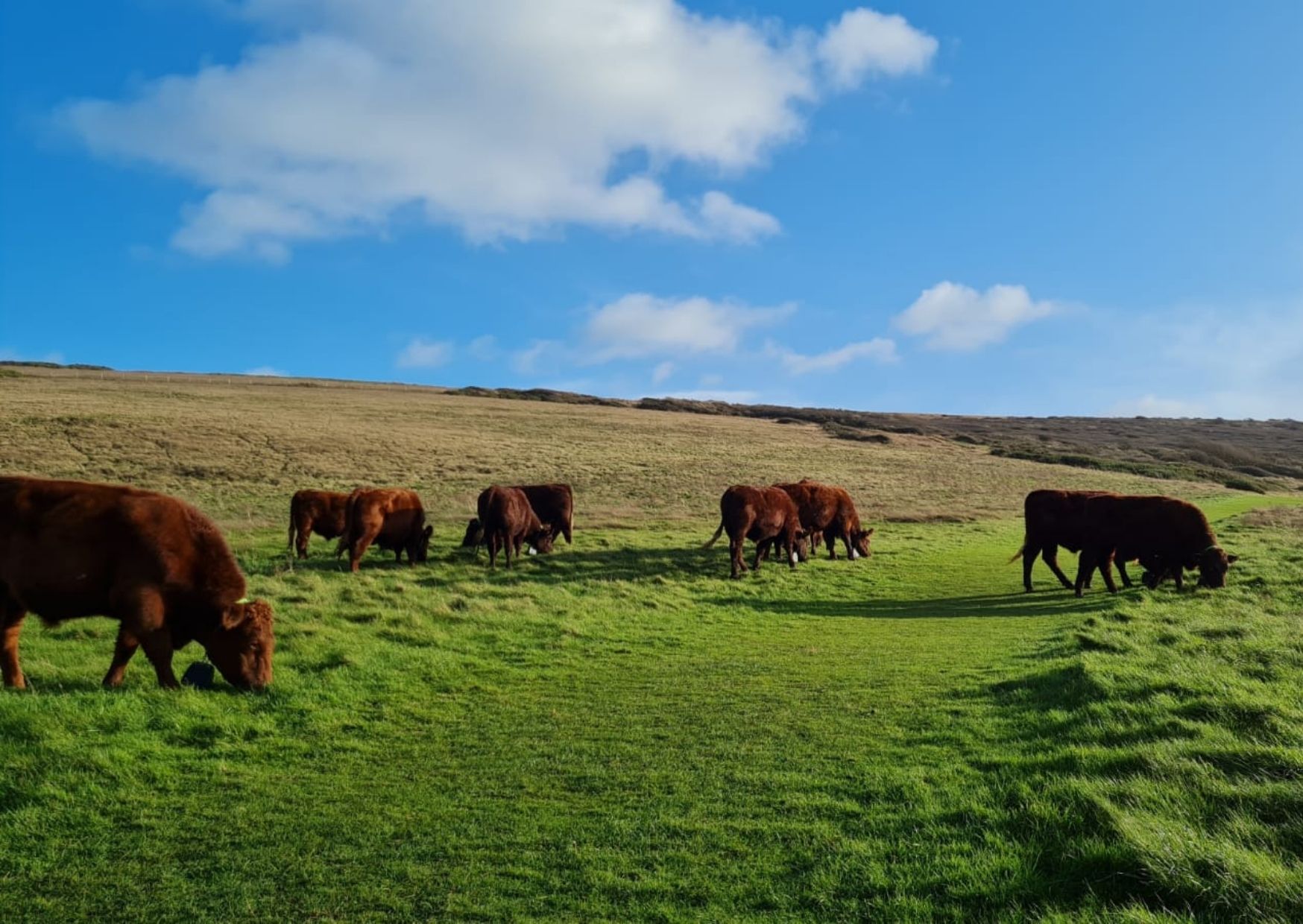Grazing at Seven Sisters FAQs
We have an extensive grazing plan at Seven Sisters Country Park using a mixture of cows, ponies and sheep to help protect and enhance the precious chalk grassland.
This conservation grazing is based on detailed site surveys and it means that grazers are rotated around the site to where they are most needed at any given time.
Conservation grazing with livestock plays a key role in maintaining the biodiversity of chalk grassland habitat.
By chewing on the longer grasses and shrubbery, it gives space for wildflowers to grow and flourish, providing an excellent source of nectar to pollinators like bees and butterflies. Our volunteers play an important role in managing the landscape and we’re pleased to be able to help provide wonderful opportunities for people to connect with nature
-
What are the cattle doing on site?
Our cattle are conservation grazing. Cow and sheep grazing has been a key part of the South Downs landscape for several millennia and created a unique habitat –chalk grassland – that now needs to be conserved. Chalk grassland, known as “Europe’s rainforest in miniature”, is an internationally-important habitat and can contain up to 45 species of plant per square metre, as well as supporting many insect species.
In the autumn and winter months, the cattle will be grazing on our areas of chalk grassland, to keep fast-growing longer grasses down and maintain a habitat that is ideal for delicate low-growing chalk grassland species.
By eating the longer, tougher grasses, the cattle are stopping these delicate grassland species from being crowded out and, in the long-term, helping the wildlife flourish.
We’ve opted for cattle at this early stage as they are more efficient at controlling the tall grass than sheep.
This innovative grazing scheme is a key aspect of our long-term management of this treasured landscape to improve it for both nature and people. The grazing scheme is being led by a partnership between the National Park Authority and Plumpton College, continuing a long tradition of grazing on the site which is vital for the conservation of this Site of Special Scientific Interest.
-
There are no physical fences to keep the cattle in. How does this work?
We’ve introduced an innovative fenceless system in which the cattle wear a solar-powered GPS collar that is linked to an app called Nofence.
Fenceless grazing pastures are set up on a map in the app, and when the cattle approach their fenceless boundary, their collar will produce an audio tone.
If the animal continues to move towards the boundary, the tone increases in pitch.
The cattle learn to listen to for their fences, and turn back when they hear the audio tone.
This is a tried and tested system that is being used successfully by land managers and farmers across the UK.
-
What are the benefits of the fenceless system?
The system allows us and the grazier to track and monitor the cattle, and also notifies us if something unexpected happens, or if an animal escapes.
Being able to create and customise the boundaries of pastures within the app enables us to graze the land more effectively, and easily target or exclude particular areas, for example, where there is an area of vigorous grass which needs particularly hard grazing, or a rare wildflower which we don’t want to get munched!
The system means that we can easily graze areas of steep or rugged land that would be hard to fence using physical fencing.
It’s particularly useful for visitor management as we can tailor the cattle’s movements during busy periods at the country park.
-
What breed are the cattle?
The cattle are Sussex breed. We also have Shetland and Welsh mountain ponies with sheep grazing the site at various times.
-
Are the collars uncomfortable for the cattle?
The collars are fitted so that the cattle have full range of motion in their neck, but not so loose that it hits their jaw when they are grazing.
-
What should I do if I encounter the cattle?
This particular breed is known for its docile behaviour and generally likes to be left alone.
We would encourage people to follow the Countryside Code, keeping a good, safe distance away from the livestock, shutting gates behind them and keeping dogs on leads. You should not feed cattle or other livestock as it can cause them harm.
If you are charged, the Countryside Code advises to let your dog off the lead if you feel threatened by livestock. Do not risk getting hurt protecting your dog. Releasing your dog will make it easier for you both to reach safety.
-
What impact is the conservation grazing regime having on nature recovery and biodiversity?
Nature recovery can take many years, but we’ve seen the green shoots of recovery with the return of species such as the short-eared owl, starlings and large flocks of dunlin, as well as greater diversity of wildflowers and invertebrates. Seven Sisters Country Park is a microcosm of the great nature recovery work going on across the South Downs National Park.
Our ReNature initiative is aiming to create thousands of hectares of new habitat managed for the benefit of nature, as well as improve the quality of the existing wildlife habitats.
You can find out more about the ReNature campaign here and find out about the successes so far here.




